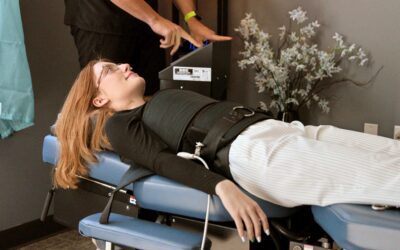Are your joints swelling or hurting? Is your weekly basketball game causing your knees to swell, or your quilting circle starting to make your neck and hands ache? Taking time off might ease the pain, but then it can feel like your joints stiffen up while you rested.
If you’ve been dealing with pain and swelling in your joints, then you may be suffering from osteoarthritis, which is the most common form of arthritis.
What Is Osteoarthritis?
Osteoarthritis is a degenerative disease that affects the joints in the hands, knees, hips, lower back, and neck. Over time, it breaks down the cartilage, or soft tissue, that connects your bones to form a joint.
As this tissue deteriorates patients begin to suffer swelling, pain, and reduced flexibility. Unfortunately, this can cause patients to reduce activity, which means their muscles can atrophy and this inactivity can lead to weight gain. This can all put even more strain on the joints.
Your bones, tendons, and ligaments can all be damaged by osteoarthritis. For example, the synovium, which is the lining of the joint, can produce too much synovial fluid and cause swelling.
One common side effect of osteoarthritis is bone spurs, which form as a kind of replacement for damaged cartilage. Some patients will be diagnosed with a bone spur before osteoarthritis, so keep this in mind.
Signs of Osteoarthritis
Not everyone reacts to osteoarthritis in the same way, but some common symptoms include:
- Pain at the joint that starts during activity, or right afterward.
- Stiffness in the area, especially after you rest the joint or after you wake up.
- Swelling
- Reduced flexibility in the joint.
- A feeling of “looseness” or instability in the affected joint.
- Popping or a grating sensation when moving.
- Bone spurs that develop near the affected joint.
Patients with Osteoarthritis
Anyone can develop this painful condition, but it is most common in middle-age. Women are more likely to have it than men once they turn 50. Other precursors can include:
- Genetics: as with any condition, a genetic predisposition can raise your chance of developing osteoarthritis.
- Being overweight or obese can put extra strain on your joints with even daily activities.
- Injuries to the joint, even as a young person.
- Overuse: too many activities that stress the joint can add up to osteoarthritis in time. This can mean high-intensity workouts, running injuries, or overuse in a sport like twisting, throwing, or quickly changing direction.
- Joint structure: people whose joints didn’t develop normally in utero or early life are more susceptible.
Living with Osteoarthritis
While osteoarthritis is not curable, there is still hope. One of the biggest ways to help is to continue to live an active life.
Inactivity can cause weight gain and muscle atrophy, which puts stress on the joints and speeds up the progression of osteoarthritis.
Your chiropractor can help you develop a safe routine to maintain flexibility. You can also engage in low-impact exercise, like swimming or bicycling.
Staying active and maintaining a healthful diet are two great ways to thrive with osteoarthritis.
Chiropractic Treatments for Osteoarthritis
Some of the chiropractic treatments we offer that can provide arthritis relief include intersegmental traction, custom orthotics, massage therapy, therapeutic exercises and weight loss.
We’re Here To Help
If you’ve been suffering from osteoarthritis and would like to learn more about how chiropractic care can improve your quality of life, we invite you to schedule an appointment and find out for yourself if chiropractic treatments are the solution that would work best for your body.
Call 417 Spine to schedule an appointment and get started on your path to optimal health.


